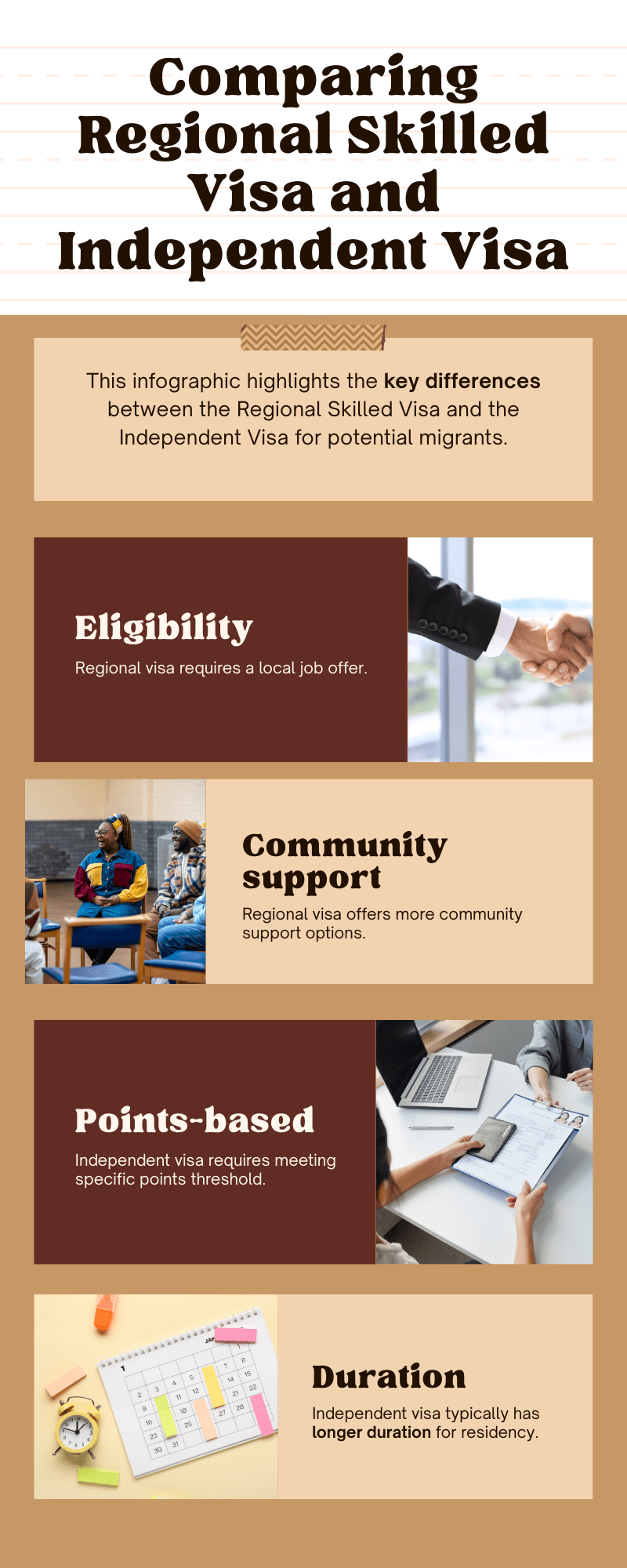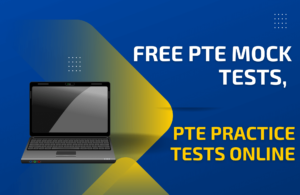Comparison of Regional Skilled Visa vs Independent Visa: Australia’s skilled migration program continues to attract global talent, with the 2025-26 permanent Migration Program set at 185,000 places, emphasizing skills to address labour shortages in key sectors like IT, healthcare, engineering, and construction.
Among the top pathways, the Subclass 189 (Skilled Independent Visa) offers unrestricted permanent residency. In contrast, the Subclass 491 (Skilled Work Regional Provisional Visa) provides a provisional route to permanent residency, with a focus on regional development.
Both require strong English proficiency, where the Pearson Test of English (PTE) Academic excels due to its efficiency and recognition by the Department of Home Affairs.
For those preparing for the PTE, ptezone.com provides specialized resources, including predictive scoring tools and sector-specific practice tests, to help meet visa thresholds efficiently.
In this article, we’ll explore the types, subtypes, eligibility, processes, and a detailed comparison of these visas as of September 2025.
Whether you’re a high-points scorer or seeking regional opportunities, this guide—tailored for ptezone.com users—will clarify your best path to Australian residency.
Understanding the Subclass 189: Skilled Independent Visa
The Subclass 189 is a permanent visa granting immediate access to live, work, and study anywhere in Australia without sponsorship. It’s points-tested and targets the Medium and Long-term Strategic Skills List (MLTSSL), aligning with national priorities.
With 16,900 places allocated in the 2025-26 Skilled Independent category, it’s highly competitive, as seen in the August 2025 invitation round, which issued 6,887 spots.
Types and Subtypes of Subclass 189
The visa features three main streams, each catering to distinct applicant groups:
- Points-tested Stream (Primary Pathway): The most common subtype for skilled professionals worldwide. Applicants submit an Expression of Interest (EOI) via SkillSelect, competing in invitation rounds based on points, occupation ceilings, and demand. Pro-rata occupations like software engineers require 85-95 points for invitations in 2025.
- New Zealand Stream: Aimed at New Zealand citizens on a Special Category Visa (Subclass 444) with at least five years of Australian residency and meeting income thresholds (e.g., AUD 53,900 taxable income). This bypasses the points test, focusing on long-term ties rather than skills assessment.
- Hong Kong Stream: Extended through 2025 for eligible Hong Kong or British National (Overseas) passport holders aged 18-32 (or up to 35 with dependents). It waives the points test for those with competent English and Australian commitment, offering a pathway from temporary to permanent residency.
These subtypes ensure inclusivity while prioritizing economic contributions.
Detailed Eligibility Criteria for Subclass 189
Eligibility is rigorous, blending skills, age, and language:
- Age Requirement: Under 45 at invitation. Points: 30 for 25-32 years, tapering to 0 at 45+.
- English Language Proficiency: Competent English (PTE 50 overall) mandatory; proficient (65) or superior (79) adds 10-20 points. ptezone.com’s PTE modules, including real-time feedback on integrated skills, help migrants secure these scores efficiently.
- Skilled Occupation and Assessment: Occupation on MLTSSL (e.g., registered nurses, ICT business analysts). Positive skills assessment from bodies like Engineers Australia, plus 3+ years relevant experience.
- Points Test: Minimum 65, but 80+ often needed. Factors include qualifications (up to 20 for PhD), work experience (15 overseas/20 Australian), Australian study (5), and extras like partner skills (5-10).
- Health and Character: Medical exams and police checks required.
Dependents (spouse, children) must meet health/character standards.
Application Process for Subclass 189
- Skills Assessment: 2-4 months from the relevant authority.
- EOI via SkillSelect: Claim points accurately.
- Invitation to Apply (ITA): Issued in rounds (e.g., quarterly in 2025); 60 days to respond.
- Lodgment: Online via ImmiAccount; base fee AUD 4,640 (main applicant), plus AUD 2,320 per adult dependent.
Processing: 7-10 months median in 2025, faster for high-demand fields. Success rate: ~75% for invited EOIs.
Benefits of Subclass 189
Immediate PR unlocks Medicare, superannuation, and citizenship eligibility after four years. No regional ties mean flexibility for urban careers.
Understanding the Subclass 491: Skilled Work Regional Provisional Visa
The Subclass 491 is a five-year provisional visa for regional Australia, requiring nomination or sponsorship. It addresses shortages outside major cities, with a pathway to permanent residency via Subclass 191 after three years.
Allocated within the 33,000 Regional places for 2025-26, the August round issued 150 family-sponsored spots, reflecting targeted distribution.

Types and Subtypes of Subclass 491
Two primary streams define this visa:
- State or Territory Nominated Stream: The dominant subtype, where a state/territory (e.g., Queensland, Tasmania) nominates based on local needs. Occupations align with the Regional Occupation List (ROL). States like South Australia prioritize onshore graduates or those with job offers, adding 15 points to the test.
- Family Sponsored Stream: For relatives (e.g., siblings, parents) living in regional Australia as Australian citizens/PR holders. The sponsor must reside in a designated regional area and provide financial support assurances. This stream waives state nomination but requires family ties verification.
Subsequent entrant visas allow family to join later.
Detailed Eligibility Criteria for Subclass 491
Mirroring 189 but with regional focus:
- Age Requirement: Under 45, same points scale.
- English Language Proficiency: Competent (PTE 50); higher scores boost points. For regional edge, ptezone.com’s advanced PTE simulators target the 79+ for superior English bonuses.
- Skilled Occupation and Assessment: On ROL (broader than MLTSSL, including regional trades like electricians). Positive assessment and relevant experience required.
- Points Test: 65 minimum, plus 15 for regional nomination/sponsorship. Emphasizes Australian work/study for extras.
- Regional Commitment: Must live/work/study in regional Australia (postcodes outside Sydney/Melbourne/Brisbane).
- Health and Character: Standard checks.
Sponsors in family stream need income proof.
Application Process for Subclass 491
- Skills Assessment: Similar timeline.
- Nomination/Sponsorship: Apply to state (e.g., via Live in Melbourne portal) or family sponsor first.
- EOI and ITA: SkillSelect after approval; 60 days to apply.
- Lodgment: AUD 4,640 base; includes biometrics.
Processing: 6-9 months, quicker than 189 due to lower competition. Pathway to 191: After three years regional work (AUD 53,900 income min.), apply for permanent (AUD 425 fee).
Benefits of Subclass 491
Provisional status allows full work rights in regions, with faster invitations (often 65-75 points suffice). Leads to PR; regional incentives include lower living costs and priority processing.
Key Differences: Subclass 189 vs Subclass 491
A side-by-side view highlights trade-offs:
Aspect | Subclass 189 (Independent) | Subclass 491 (Regional Provisional) |
Visa Duration | Permanent from grant | Provisional (5 years); PR after 3 years regional |
Sponsorship | None | State/territory or family required (+15 points) |
Location Restriction | Anywhere in Australia | Designated regional areas (3 years for PR pathway) |
Occupation List | MLTSSL (national focus) | ROL (regional emphasis, broader options) |
Points Threshold | 65+ (80-95 competitive in 2025) | 65+ (easier with +15; 70-80 typical) |
2025-26 Allocations | 16,900 places | Within 33,000 Regional (state/family split) |
Processing Time | 7-10 months | 6-9 months |
Cost (Base) | AUD 4,640 | AUD 4,640 (+ AUD 425 for 191 later) |
Best For | Urban professionals with high points | Regional enthusiasts or mid-points applicants |
Application Processes Compared
Both leverage SkillSelect, but 491 adds a pre-EOI nomination step (1-3 months extra). 189 is federal-only; 491 involves state portals (e.g., NSW’s SNAAP). Digital enhancements in 2025, like e-lodgment, streamline both, though 491’s regional verification can delay. Costs align, but 491’s PR transition adds expense.
Pros, Cons, and Which to Choose?
Subclass 189 Pros: Instant PR, nationwide freedom.
Cons: Intense competition; August 2025 rounds skipped below 80 points for many occupations.
Subclass 491 Pros: Points boost eases entry; regional lifestyle perks like housing grants.
Cons: Provisional uncertainty; must commit to regions (e.g., no Sydney for three years).
Select 189 for 80+ points and city ambitions. Choose 491 for quicker access or family/regional ties—ideal if urban PR feels out of reach. A registered migration agent can assess your EOI.
Charting Your Skilled Migration Journey
As Australia’s 2025-26 program holds steady at 185,000 places with 132,200 skilled, Subclass 189 and 491 offer tailored routes to prosperity.
Mastering PTE is pivotal—visit ptezone.com for visa-optimized courses, including mock tests mirroring Home Affairs criteria, to boost your application. With strategic planning, your regional or independent path to PR awaits. Lodge your EOI and embrace the Aussie dream.



